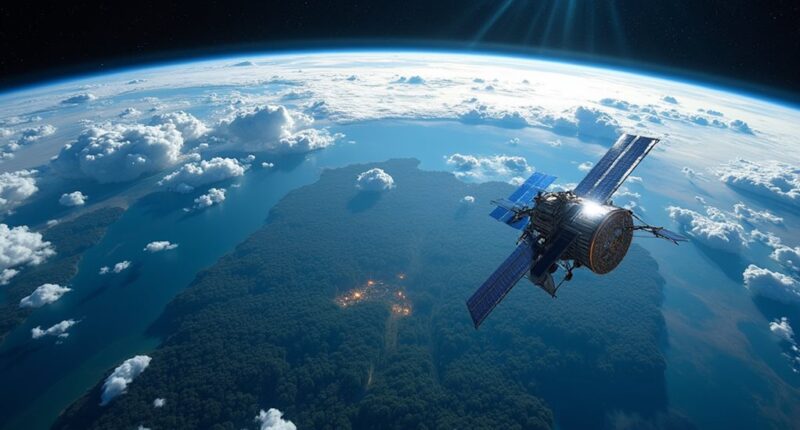Satellites are the unsung heroes in the battle against climate change, offering critical insights into greenhouse gas emissions, deforestation, and even polar ice melt. They track harmful activities like illegal logging and can predict agricultural yields from space—no crystal ball required! These high-tech eyes help craft smart policies and promote sustainable practices. Think of satellites as the planet’s diligent meteorologists, armed with a lens for accountability. But there’s so much more to uncover about their extraordinary role.
Harnessing Satellite Technology for Climate Solutions
As the world grapples with the pressing challenges of climate change, satellite technology emerges as a powerful ally, orbiting high above like a watchful guardian. These high-tech eyes in the sky have transformed how humanity monitors and combats environmental issues, making them indispensable in the fight against climate change.
Satellites are the unsung heroes when it comes to measuring greenhouse gases like carbon dioxide and methane with remarkable accuracy. They pinpoint emission sources and levels, giving policymakers the data they need to address leaks and emissions proactively. Imagine having a superhero’s x-ray vision to spot those pesky methane “super-emitter” events before they wreak havoc—this is exactly what satellites do.
In addition to tracking greenhouse gases, these technological marvels keep tabs on deforestation and land use. They can identify illegal logging activities and track forest cover changes faster than a squirrel can scamper up a tree. With advanced imaging, satellites assess vegetation health, ensuring forests can keep up their role as Earth’s lungs, absorbing carbon like they’re on a mission. Beyond forests, satellites monitor watershed health to ensure clean water supplies and protect aquatic ecosystems essential for climate resilience. Continuous monitoring of greenhouse gases is essential for limiting temperature rise, and satellites provide a vantage point to observe Earth’s atmosphere. Polar-orbiting satellites offer comprehensive coverage of global environmental changes, enhancing our understanding of climate dynamics.
Farmers, too, benefit enormously from satellite technology. By providing real-time data on soil moisture, rainfall patterns, and plant health, satellites help optimize irrigation, making farming more efficient. Picture a farmer armed with satellite data, able to predict crop yields and detect pest infestations before they become a disaster—it’s like having a crystal ball for agriculture!
But the story doesn’t end there. Satellites are vital in monitoring polar ice and sea levels, helping us understand how fast the ice is melting and what that means for future generations. They deliver precise measurements that inform climate adaptation strategies, ensuring that communities are prepared for the rising tides.
In essence, satellite technology is revolutionizing climate action. It’s like having a GPS for the planet, guiding humanity toward a more sustainable future while keeping an eye on the environmental road ahead.









